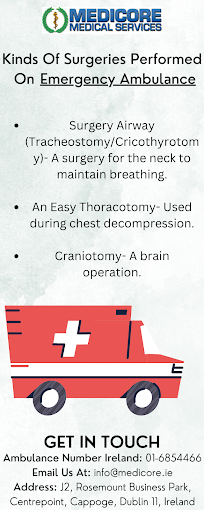The Difficulties An Emergency Ambulance Faces
The patient who needs immediate medical attention is being rushed to the hospital in a white vehicle that is commonly referred to as an ambulance. The vehicle accelerates through the busy intersections of the city. In any other situation, there are ambulances zipping through the streets, transporting patients from the hospital to their homes or vice versa. An ambulance is a type of medical vehicle that is in demand both during times of immediate need and during times when there is no immediate need.
When traveling in an ambulance, you should be prepared for both anticipated and unanticipated roadblocks. In addition, a large number of individuals are involved in each of these possible outcomes. There are both people who work in medicine and people who are ill and in need of medical attention among them. As a result, the issues that have been observed with ambulance services will most likely be the result of intervention from either humans or other factors. The clarity of support provided by the medical personnel, the conditions of the climate, and the conditions of the vehicle will all be among these.
It might sound like nothing out of the ordinary when you hear about the challenges that an ambulance ride presents. However, it is necessary to accord it the utmost priority and to take measures in order to compensate for its deficiencies. An ambulance that is not equipped for emergency calls will be used for long-distance medical transport as well as for providing backup medical aid assistance during programs and events. In addition, there is the possibility of obstacles appearing along the route.
The provision of emergency ambulances in emergency situations is hampered by a number of issues.
In ambulatory care, the passage of time and the promptness with which actions are carried out play an important part. When discussing medical transportation, it is necessary to discuss the concerns associated with the trustworthiness of ambulances. Therefore, it is essential to have a car that is in good shape and a driver who is aware. The path to safety is paved with every twist and turn. The healthcare services and hospitals that are in charge of providing emergency ambulance need to investigate ways to improve passenger safety while the ambulances are in transit.
The medical staff in the ambulance ought to be aware of the reason for the patient's requirement that is not an emergency in order to make it simpler for them to assist the patient. If you are familiar with the patient's past medical conditions, you will find it easier to organize the appropriate supplies in the ambulance. The patient's well-being should always come first. It is necessary to take precautions in order to guarantee that the patient will arrive at their destination in a healthy state. To be able to provide assistance in the necessary circumstances, it is essential to have qualified paramedics on board.
Changes in the climate- The changing of the seasons can either be beneficial or detrimental to ambulance travel. When it's raining, getting around on the roadways might be difficult because of all the standing water. In the case of the summer season, a lot of people are experiencing symptoms of dehydration in addition to heatstrokes. In order to provide care and assistance to members of the general public throughout the summer months, an ambulance needs to be prepared appropriately.
Conditions of the vehicle- It is imperative that the ambulance be serviced and maintained at all times. In any situation in which aid is necessary, the only mode of transportation that will do will be one that is entirely air-conditioned. It is necessary to conduct inspections and keep tabs on the status of the equipment found in the ambulance. Because of the frequency with which passengers use the facilities, it is possible that they will need refills as well as medical supplies on board. Long-distance transportation will necessitate the consumption of gasoline, as well as the acquisition of additional supplies.
It's possible that all of these considerations sound overly simplistic. If these factors are not effectively alleviated, however, there will be a significant impact because it will have been generated. It is imperative that priority be given to the efficient maintenance of ambulances, qualified ambulatory teams, and rapid response times.





Comments
Post a Comment